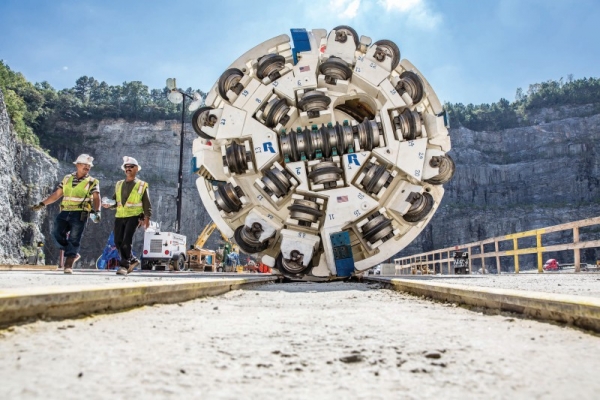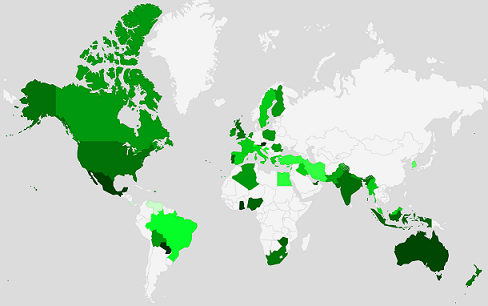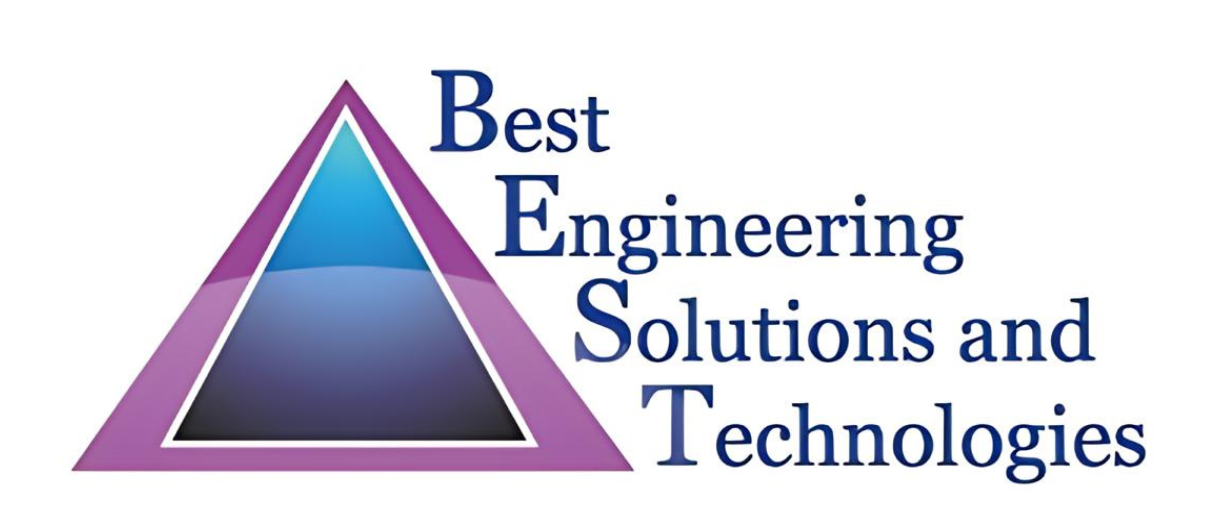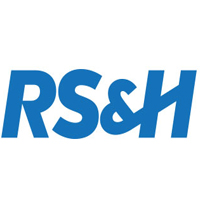Loading Geo-Trends Review...

Geoengineer.org news
25 Oct 2018

Have you ever wondered how would it be like attending a lecture by Prof. Karl Terzaghi? You can now listen to a 25 minutes recording of Prof. Terzaghi last lecture in Harvard! https://www.geoengine...
Read More
ISSMGE news
20 Nov 2018
Proceedings from 26th European Young Geotechnical Engineers Conference (Graz, Austria 2018) available in open access | "https://www.issmge.org/news/proceedings-from-eygec-2018-available-in-open-access
Read More
Geoengineer.org news
26 Nov 2018

TBM breaks through hard granitic rock on Atlanta water tunnel I Read more: https://goo.gl/yGsQQ3
Read More
Michele Calvello group
30 Oct 2018
Porto Tolle test embankment - A full scale experiment on the consolidation of a thick clay layer Case-study webinar by Prof. Carlo Viggiani (Emeritus Professor at University of Naples “Federico...
Read More
UCLA GeoWall group
09 Oct 2018
1. What are the dimensions (length, width, height) of the hardwood impact block used for the third load case? 2. Please clarify how the impact block and steel L bar are to be connected. It is uncle...
Read More
GeoWorld Administrator news
15 Nov 2018

GeoWorld is excited to introduce the new Job opening section! GeoWorld partners with CEEcareers.com, the most comprehensive job directory in Civil, Environmental & Construction Industry, to bri...
Read More
GeoWorld Administrator news
01 Oct 2018

We are pleased to present the results of the Geotechnical Confidence Index (GBCI) for the 3rd quarter of 2018: Very good business conditions for the next year are reported by GeoWorld members in th...
Read More
Geopier, a division of CMC news
05 Oct 2018
Geopier announces Jack Salerno, MECE, PE as Vice President of Operations for North America. Geopier recently announced that it has appointed Jack Salerno, MECE, PE as Vice President of Op...
Read More
Humboldt Mfg. Co. news
14 Nov 2018
The Humboldt H-4212MH pocket shear vane Tester by Humboldt provides a quick and efficient method for determining shear strength values of cohesive soils. The pocket shear vane is widely u...
Read More
International Journal of Geoengineering Case Histories news
27 Nov 2018

We are pleased to announce the Issue #4 of Volume #4 of the ISSMGE International Journal of Geoengineering Case Histories. This special Issue is a collection of some of the top papers submitted to the...
Read More
Lucy Wu group
25 Nov 2018
To promote young members of ISSMGE to play a major role in various international and regional conferences, the President of ISSMGE – Professor Charles Ng created the Bright Spark award for promi...
Read More

ISSMGE group
06 Oct 2018
Paper invitation for themed Issue on “Climate Change and Geotechnical Engineering” to be published in Environmental Geotechnics in 2019. All TC 307 members, active res...
Read More

THE BROWNS GEOTECHNICAL & GEOENVIRONMENTAL ENGINEERING SERVICES LIMITED ALBUM
19 Sep 2018

Geoengineer.org news
14 Nov 2018

Lake dam in Texas on the edge of collapsing. I Read more: https://goo.gl/RqNWz3
Read More
International Journal of Geoengineering Case Histories news
12 Nov 2018

Read the new paper published in the IJGCH with the title: "Flooding Vulnerability Lessons Learned in Assessing the Effects of Flooding Caused by the Canterbury Earthquake Sequence" by Mark...
Read More
Geoengineer.org news
01 Nov 2018

The longest sea bridge in the world, located in China, is ready to open | Read more... https://www.geoengineer.org/news-center/news/item/2170-world-s-longest-bridge-ready-to-operate
Read More
Geoengineer.org news
26 Nov 2018

New insights about the seismic hazard of New Madrid area, Missouri I Read more: https://goo.gl/6vbFa4
Read More
Dimitrios Zekkos group
09 Oct 2018
On behalf of Prof. Sandro Lemos Machado please find enclosed invitation for participation in a special issue on Landfill Mining for the Journal of Environmental Engineering and Science. Download Fl...
Read More
SoilModels - Hub For Geotechnical Professionals news
08 Oct 2018
ALERT Geomaterials (The Alliance of Laboratories in Europe for Education, Research and Technology) is a European organisation including 33 Universities or Organisations, which are most activ...
Read More
Geoengineer.org news
14 Nov 2018

Race to free people trapped by landslide in Philippines. Read more: https://goo.gl/rcK5CW
Read More
International Journal of Geoengineering Case Histories news
14 Nov 2018

Read the new paper published in the IJGCH titled: "Lessons Learned from The Application of UAV-Enabled Structure-From-Motion Photogrammetry in Geotechnical Engineering" by Dimitrios Zekkos...
Read More

Ogulcan Ozcan group
22 Oct 2018
Hi I know this question has been asked many times. But we still have don't know the answer. Are we able to attend this competition from outside of the USA.Thank you. Best Re...
Read More
Need suggestions about smectite or other High plastic engineering material?
Q&A
- 22 Nov 2018
I am looking for Smectite or any engineering material that I can use in my soil to measure the plastic limit. I have a dataset of 150 samples with max plastic limit 31% and I want to increase the variability of my dataset (plastic limits with 40 to 50 %) and need any suggestions from where I can get high plastic soil samples or any engineering material such as smectite to add in my available soil and can measure plastic limit. suggestions will be appreciated a lot.
Post Your Answer
Answers
Soil Moduli
Q&A
- 21 Nov 2018
-Please where can I get any help texts or papers on secant and tangent modulus?
Post Your Answer
Answers
Poisson's Ratio
Q&A
- 12 Nov 2018
Post Your Answer
Answers

- 15 Nov 2018
During triaxial compression, you can estimate Poisson's ratio by measuring lateral expansion of the specimen (while measuring vertical compression of course). You can also measure Poisson's ratio from pressuremeter measurements or dilatometer measurements in the field, as well as by measuring both p-wave and s-wave velocity.

Abrham Hagazi Tegegn
- 15 Dec 2018
it is diffical to get reliable poisnes ratio from field but you can get in laboratory in triaxial test
In-Situ Pressuremeter test
Q&A
- 12 Nov 2018
What is the basic difference between APAGEO Pressiometer and OYO Pressuremeter? Which one is preferable for insitu test and why? What is the price range in between them?
Post Your Answer
Answers

Foued Ben alaya
- 16 Dec 2018
Hello,
I would recomend APAGEO, they are the pionneers in pressuremeter testing, with broad experience and expertise.
For prices, you can contact them : http://www.apageo.com/en/18/in-situ-testing-soil-investigation.html
Regards,
horizontal subgrade reaction of soil
Q&A
- 11 Jun 2018
What is the recommended value for static horizontal subgrade reaction of soil for pile design?
Which of the relationships presented for static horizontal subgrade reaction is closer to reality and recommended to use for pile design?
Post Your Answer
Answers

SAMUEL MUSOBOZI RWAKIJUMA
- 17 Sep 2018
Hi,
You can use the article tittled "Subgrade Modulus of Laterally Loaded Piles in Clays" by DANIEL O. WONG. This article brings out the whole analysis procedure to obtain the "k" horizontal value.
Regards,
Estimation of Allowable Bearing Capacity of Basement Rock
Q&A
- 17 Mar 2018
We have a location where a Standard Penetration Test (SPT) has been done up to 22m below the ground level, and additional 8m coring in weathered rock, with "ZERO" Rock Quality Designation (RQD) values, when the Client ordered termination of boring.
How can we estimate the allowable bearing capacity of this rock? Is carrying out Uniaxial Compressive Strength (UCS) test, the only possible method?
Many thanks in advance.
Post Your Answer
Answers

Abdul Jabbar
- 28 May 2018
You may perform point load tests on the rock material and u can correlate it with Ucs value. The angle of repose can be consider in calculating allowable bearing capacity.The Angle of Repose because Rock Triaxial instruments are rarely available in the local industry. Further reading is recommended on intermediate Geo-Materials ”IGM

Done Nikolovski
- 02 Jul 2018
Bowles (fifth edition, p279) suggests that you can make calculation of the bearing capacity of the ground, according to the same equations that are derived for soil materials, when you have value of RQD<25. Make the best estimation of the parameters of the ground (fi and C), for the given stress state.
Regards

Louai Jannoun
- 26 Jul 2018
If rqd is zero. Then very poor rock. As engineering judgement i would consider this rock as very dense gravel with low or zero cohesion and high angle of internal friction.

SAMUEL MUSOBOZI RWAKIJUMA
- 17 Sep 2018
Hi,
All the above recommendations are great. I would advise you to consider the rock formation as a cohesionless soil with 0 cohesion and fi above 35 degrees. You can improve the design by considering it to be an intermediate Geo-Material, as one of the respondents above has commented. You can solve this problem with the "ALLPILE" program, it has a special provision for this kind of material.
Regards,

Abrham Hagazi Tegegn
- 15 Dec 2018
hi it is very difficalt to estimate the rock bearing capacity in UCS if its RQD value is zero hence the very important thing is that geotecnicall oberve the geological formation/orentation of the rock, discontiniuty, fault and other gaps of the area/pit/ and identify weather it is suitable or saviere then we can considers as soil or weatherd rock and calculate the bearing capacity using the adopted formmulas
Soil improvement/reinforcement for wind turbine foundations
Q&A
- 11 Jul 2018
Hello everyone,
I have the task of suggesting a suitable ground improvement/reinforcement method for onshore wind turbine foundations with known dimensions according to a specific soil type and its properties. The methods I study are piles, micro-piles, rigid inclusions, stone columns, soil substitution and vibrocompaction. I have to make a software guide where the user must insert values as input and the output should be the suggested technique(s). My problem is that I am unsure of what input values should I look for and how to connect them to a specific technique. The soil properties are given from a pressuremeter test. During my research I found out that the grain size is important when it comes to selecting a technique. However, I am sure that the bearing capacity and maybe other parameters that I am unaware of are important too. I have read multiple geotechnical reports but the authors just give a method, they don't explain why they chose this method. I would be very grateful if some of you geotechnical engineers out there could help me because I feel a bit lost.
Kind regards,
Boris
Post Your Answer
Answers

Salahudeen A. Bunyamin
- 12 Aug 2018
Authors do not normally explain why they chose certain parameters for methods because the parameters themselves depend on the methods. Normally, the methods depend on parameters inclusive and having direct or indirect relationship with the method in question. To me, getting the methods and their associated parameters is enough to kick start your project. Knowing why parameters are chosen is explained expressly with the requirements of the method under consideration.

SAMUEL MUSOBOZI RWAKIJUMA
- 17 Sep 2018
Hi,
If you have pressuremeter test results, this is quite enough to provide a suitable solution. On the other hand, it is important to have soil classification information as basic data in the design process. If it is an onshore project, I would recommend that you employ screw/helical piles, as they are easy to install (aprox. rate of installation - 1.8m/min), then join them with a pile cap on top which would already have the needed anchors to receive the wind turbine. Another advantage with this technology is that the fabricant of the helicals will provide free of charge foundation design. You can send me an email, then I can send you photos of some case studies we have had in this regard.
All the best in your project!

Foued Ben alaya
- 16 Dec 2018
Hi,
Applicability of compaction techniques (Vibrocompaction, Dynamic Compaction, Rapid Impact Compaction, etc) will be mainly dependent on grain size distributions.
Applicability of reinforcement techniques with flexible inclusions (Stone Columns, Dynamic Replacement, etc) will mainly depend on depth of improvement, and lateral strenght of soil.
Applicability of reinforcement techniques with rigid inclusions (such as Controlled Modulus Columns) are frequently used for Wind Turbine foundations. Limitations could be related to significant uplifting forces, which may require to have armed rigid inclusisions linked to structure, i.e. piling solution.
Other than technical consideration, the economic aspect and availability of technique are key elements in the selection of the method.
Regards,

Michael Joseph Byle
- 03 Jan 2019
Having designed a variety of soil improvement and foundations for wind turbines in a wide range of soil conditions, I can tell you the right solution cannot easily be determined from simple soil properties. Soil shear strength, soil density, degree of saturation, layer thicknesses, depth to firm stratum, soil chemistry/corrosivity, thermal resistivity, site location, and availability of matierials and equipment all have a roll to play in method selection. Depth to rock or a stiff stratum can be a really important factor, especially for surface treatment methods such as RIC or DDC. You can get into a whole realm of solutions involving micropiles or anchors where soft soils are too deep for practical improvement and rock is too shallow to permit adequate uplift resistance. Foundations over soft rock such as coal, can pose a whole different set of issues. Each site can be very individual. Many wind energy sites are not virgin ground and may have had prior industrial or minerals extraction activities that may have significantly altered the subsurface conditions increasing complexity of the sites.
Ultimately it comes down to selecting the most economical and technically feasible method. Unless you are dealing in a single geologic setting, you will have to assess the potential for geologic hazards including hydrocollapse, expansive clays, sinkholes, landslides, acid rock drainage, soluble minerals such as halite or gypsum, and other factors that can affect the selection of foundation support methods. If working on contaminated sites, a whole additional set of factors comes into play related to safety, cross contamination and discposal of excavated soils. Practical issues such as access for materials and equipment to remote locations and variability of conditions across sites can have a profound impact on the choice the method, since flexibility and applicabilty to a wide range of expected of conditions may be necessary. I am not sure if any of this helps you, but at the very least, I hope it gives you some insight into the selection process to set appropriate limits for the applicability of your solution. I suspect that trying to develop a universal approach would be problematic. I would suggest that you should at the very least limit any programmed solution to a particular set of conditions or geoplogic setting. Good luck.

Swiss Geotechnical Association Administrator news
16 Oct 2018
16.05.2019: Spring Conference "Vereisungsmassnahmen in der Geotechnik", Bern 26./27.09.2019: Fall Conference "Grand-Paris", Paris, for members only. More information soon on:...
Read More Geotechnical Staff Engineer
Geotechnical Staff Engineer
Fields: Civil - Geotechnical , Civil - Structural, Civil - Environmental, Civil - Construction, CAD Designer
Location: Colorado, United States
 Assistant Project Manager
Assistant Project Manager
Fields: Civil - Geotechnical , Civil - Structural, Civil - Transportation , Civil - Project Management, Civil-other
Location: Massachusetts, United States
 Geotechnical Drilling Assistant
Geotechnical Drilling Assistant
Fields: Civil - Geotechnical , Construction - Equipment Operator, Construction - Other
Location: Wisconsin, United States
 Early Career Civil Engineer
Early Career Civil Engineer
Fields: Civil - Geotechnical , Civil - Structural, Civil - Environmental, Civil - Hydraulic, Civil - Construction, Civil - Transportation , Civil-other
Location: ,
 Geotechnical Engineer
Geotechnical Engineer
Fields: Civil - Geotechnical , Civil - Transportation
Location: New York, United States
 Civil Engineering Intern - Summer 2026
Civil Engineering Intern - Summer 2026
Fields: Civil - Geotechnical , Civil - Structural, Civil - Environmental, Civil - Hydraulic, Civil - Construction, Civil - Transportation , Civil-other
Location: Virginia, United States
 Civil Engineering Intern - Summer 2026
Civil Engineering Intern - Summer 2026
Fields: Civil - Geotechnical , Civil - Structural, Civil - Environmental, Civil - Hydraulic, Civil - Construction, Civil - Transportation , Civil-other
Location: Virginia, United States
 Civil Engineer
Civil Engineer
Fields: Civil - Geotechnical , Civil - Structural, Civil - Environmental, Civil - Hydraulic, Civil - Construction, Civil - Transportation , Civil-other
Location: New Hampshire, United States
 Senior Project Manager, Transportation
Senior Project Manager, Transportation
Fields: Civil - Geotechnical , Civil - Transportation , Civil - Project Management
Location: Ohio, United States
 Entry Level Civil Engineer
Entry Level Civil Engineer
Fields: Civil - Geotechnical , Civil - Structural, Civil - Environmental, Civil - Hydraulic, Civil - Construction, Civil - Transportation , Civil-other
Location: ,
 Entry Level Civil Engineer
Entry Level Civil Engineer
Fields: Civil - Geotechnical , Civil - Structural, Civil - Environmental, Civil - Hydraulic, Civil - Construction, Civil - Transportation , Civil-other
Location: Ohio, United States

